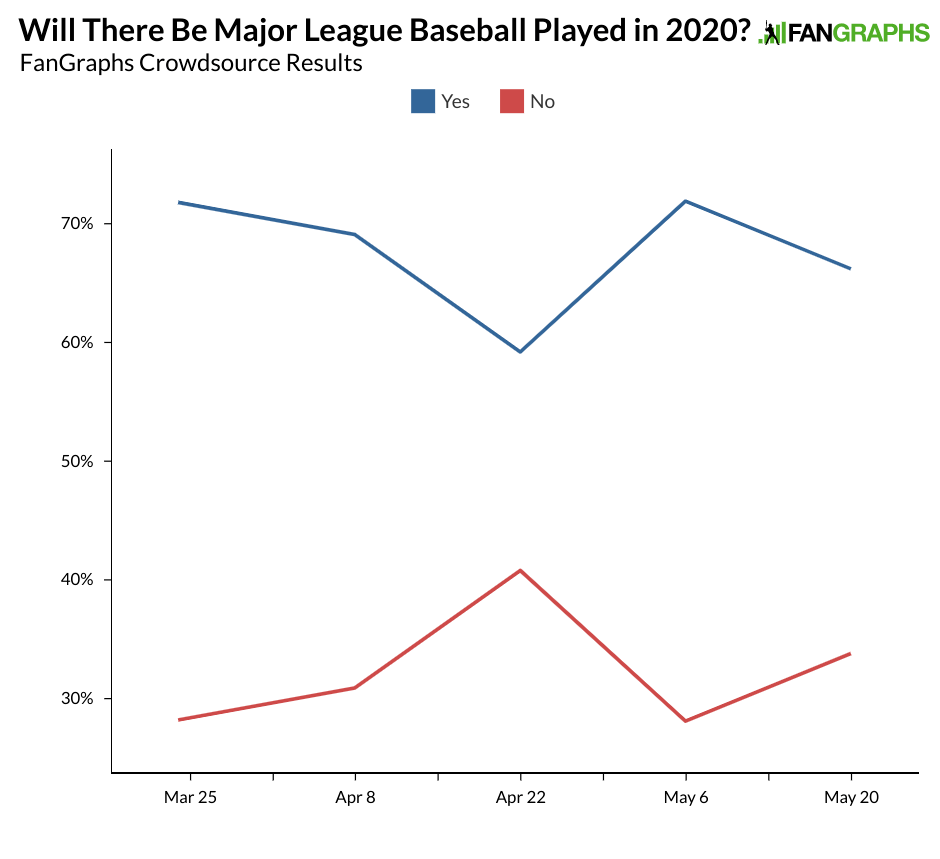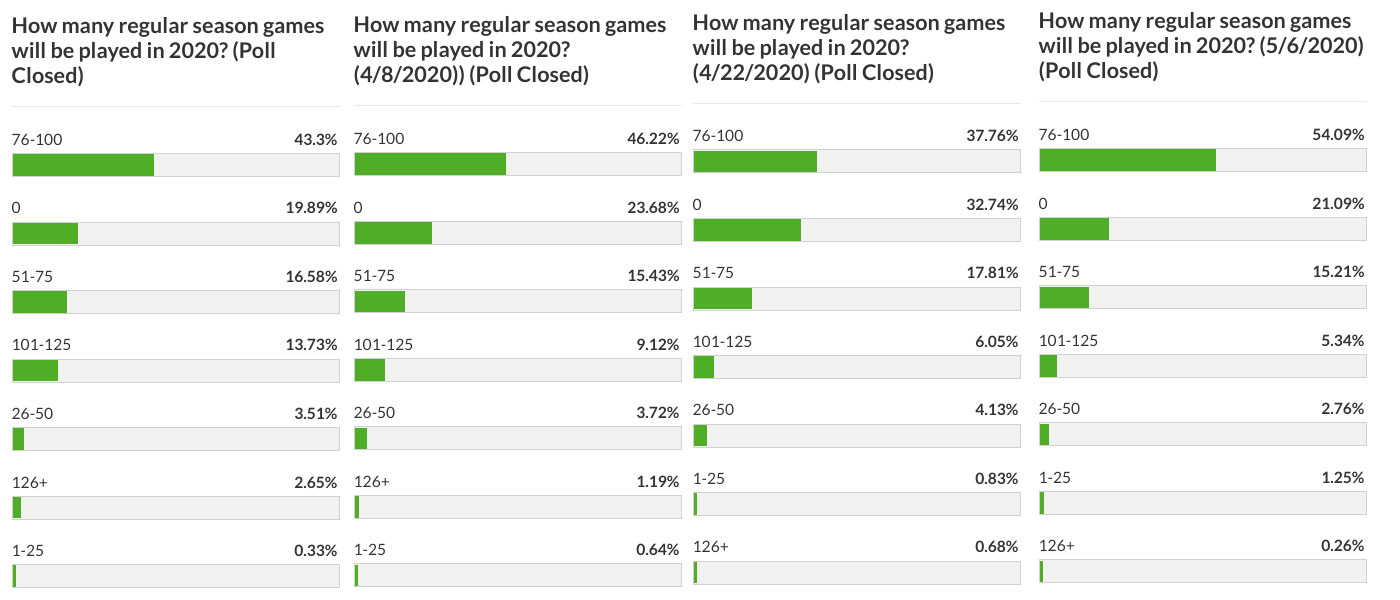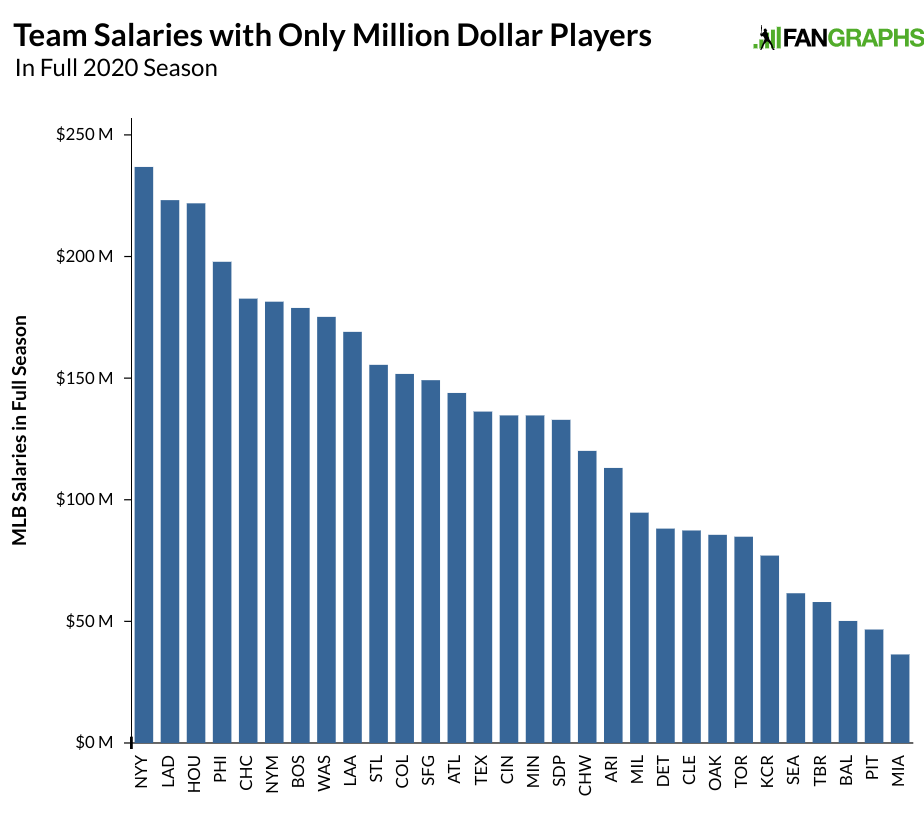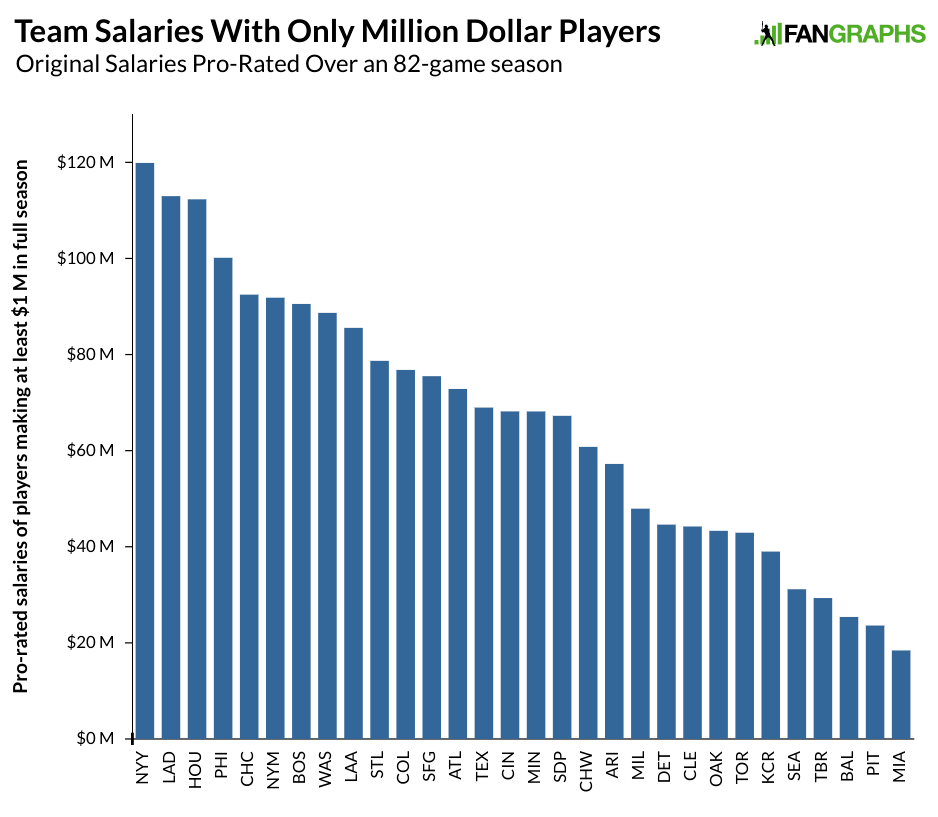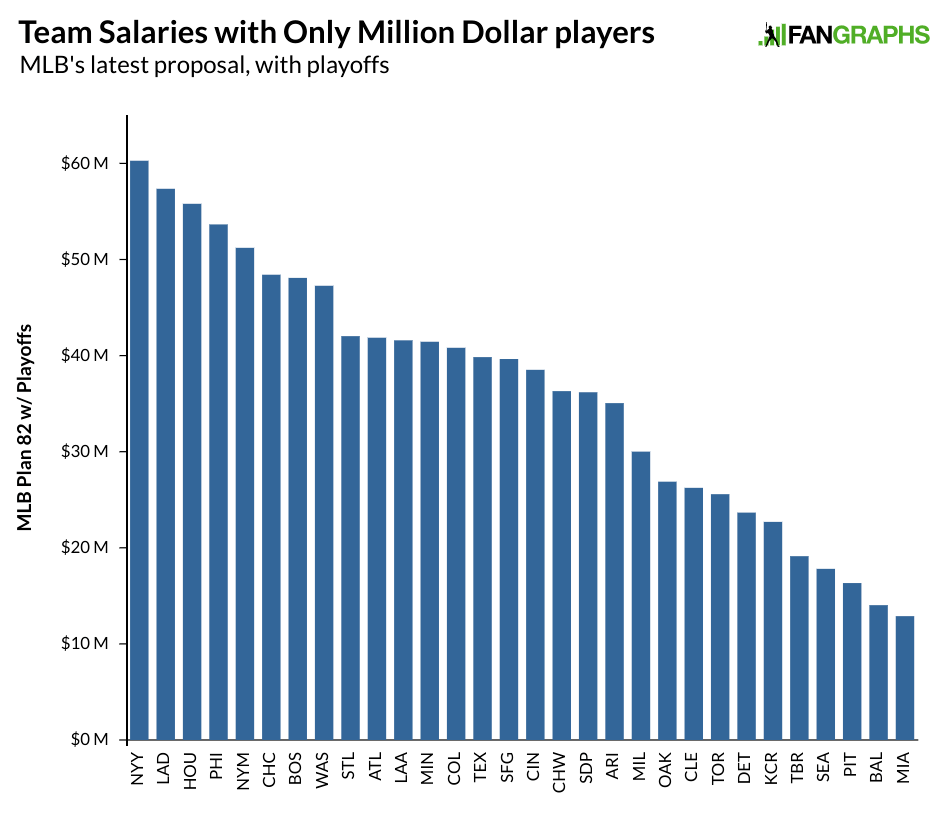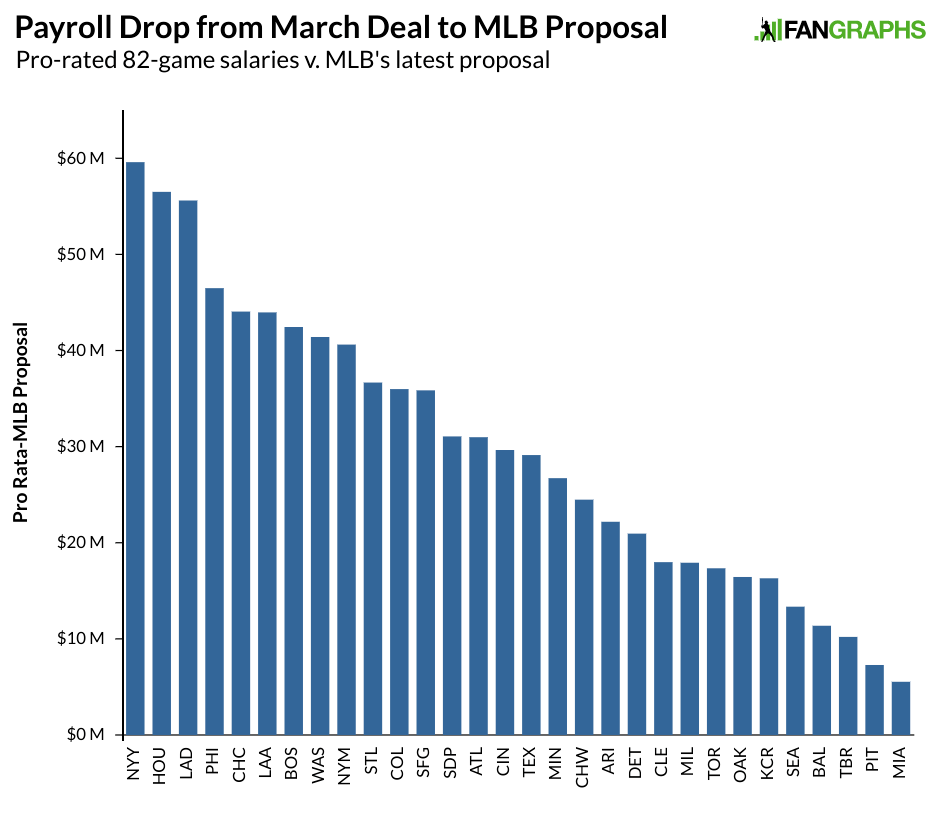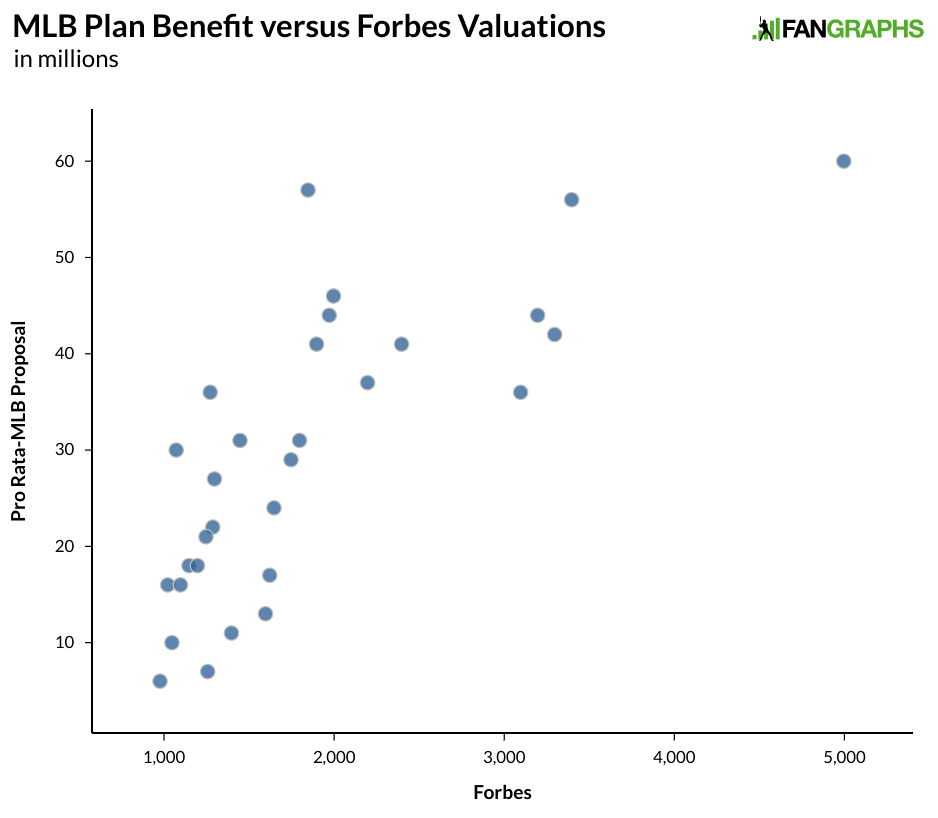On March 26, MLB and the MLBPA reached an agreement with respect to playing the 2020 season. The parties were mostly silent for a few weeks regarding financial matters, with much of the focus on when and how the season might be resumed and played safely with the threat of COVID-19 still looming. But operating in the background were increased concerns over lost revenues in the event of games or an entire season played without fans in attendance.
With those concerns has come some anxiety that a public debate on the fate of millions, even billions, of dollars will be perceived by fans of the sport as unseemly, especially when set against the backdrop of the suffering the pandemic has inflicted on so many. But how have the terms of that debate come to be known? With the MLBPA in the position of reacting to proposals offered by the league, I thought I might examine the how and when of MLB’s public claims. Below, you’ll find excerpts from pieces that ran at a variety of publications showing how MLB has attempted to negotiate or portray its financial situation publicly since reaching the March agreement (links are in the date)
April 15
Manfred said about 40% of operating revenue derives from gate and gate-related areas, such as luxury suite rentals, concessions, parking, signage, and program sales and advertising. Going forward with a plan to play in empty stadiums likely would lead to another negotiation with the union, led by former All-Star first baseman Tony Clark.
April 15
“I talked to Jeff Wilpon today, the owner of the Mets. Go Queens. Go New York,” [New York Governor Andrew] Cuomo said. “I said, ‘Why can’t we talk about a baseball season with nobody in the stands? Why can’t you play the game with the players?’ I think it would be good for the country. I think it would be good for people to have something to watch and do to fight cabin fever. And it’s something I’m going to pursue. Apparently Major League Baseball would have to make a deal with the players, because if you have no one in the stands, then the numbers are going to change, the economics are going to change.”
April 16
A league spokesperson said that “both parties understood that the deal was premised on playing in stadiums with fans and the agreement makes that clear.”
April 16
There are owners who have privately said that without readjustments they would lose so much more money, why even play the games.
April 19
“Our clubs rely heavily on revenue from tickets/concessions, broadcasting/media, licensing and sponsorships to pay salaries,” Manfred wrote in an email Monday, a copy of which was obtained by The Associated Press. “In the absence of games, these revenue streams will be lost or substantially reduced, and clubs will not have sufficient funds to meet their financial obligations.”
April 21
Although an agreement between the sides on return to play exists and includes a section on players receiving prorated sums of their salaries, multiple owners have suggested that it could cost them more to play games than it would not to play them and said they believe the agreement between the sides could allow them to pursue pay cuts from players.
April 22
[T]o have games just on TV for the whole season for many, many reasons is not practical. – Randy Levine, team president, New York Yankees
April 27
Some teams contend that they could actually lose money if games are played. Their rationale is that local and national TV money will not cover their operating costs. And if that’s the case, they would like players — who already have agreed to be paid a prorated portion of their salary depending on the number of games — to take an even greater pay cut.
May 7
“If we ended up playing and playing in front of full fans, for 82 games, it makes total sense that we would pay players’ full salaries,” one industry executive said. “If you’re in the more extreme where we have to play empty everywhere, that’s half the revenue that would have come in that’s not coming in anymore. We weren’t equipped or budgeting to pay full salaries for that.”
As things stand, league officials say that on average, for every incremental regular-season game played without fans in 2020, teams would spend more money on player salaries than they would earn in revenue.
May 9
Without the players making such a concession, league officials say they will spend more on player salaries than they would earn in revenue for every incremental regular-season game played without fans.
May 9
MLB has said it will lose more money by keeping the pay prorated without fans and is averse to playing games in that situation.
May 11
Major League Baseball owners, with an abundance of optimism that baseball will be played this year, are scheduled to vote on a plan Monday that will require teams to share at least 48% of their revenue with the Major League Baseball Players Association this season, two people with direct knowledge of the proposal told USA TODAY Sports.
The people, who spoke only on the condition of anonymity because they were unauthorized to discuss details, said the historic revenue-sharing plan is integral to diminish revenue losses with games potentially being played without fans beginning in July. MLB officials say that teams are expected to lose about 40% of their gross revenue from ticket sales, concessions and parking.
May 11
“We lose money on every single game (without fans),” one league official said. “We have to propose that they take something less than they already negotiated.
May 13
“We’re talking about heavy, heavy losses,” one owner told USA TODAY Sports on the condition of anonymity because negotiations are private. “There are teams that would lose about $100 million during the regular season if we played with no fans and the players’ salaries stayed the same.”
May 14
MLB owners, saying they could lose as much as $150 million per club during the regular season if players don’t restructure their salaries, agreed Monday to propose a 50-50 revenue sharing plan instead of paying them pro-rated salaries.
May 14
Tom Ricketts told season ticket holders that 70 percent of the Cubs revenue comes from game day operations / ticket sales/ fans in the stands. He went on to say with half the season gone 15 percent of gross revenues would be the take with no fans.
May 14
[P]laying in empty stadiums is not a great feel for us economically, but our owners are committed to doing that because they feel it’s important that the game be back on the field. – Rob Manfred, on CNN
May 15
Angels owner Arte Moreno is particularly insistent the league should not re-start without economic concessions from the players, sources say.
May 16
Major League Baseball told players their prorated salaries would contribute to an average loss of $640,000 for each game over an 82-game season in empty ballparks, according to a presentation from the commissioner’s office to the union that was obtained by The Associated Press.
Teams say the proposed method of salvaging a season delayed by the coronavirus pandemic would still cause a $4 billion loss and would give major league players 89% of revenue.
May 19
A March 26 conversation between MLB and the union in which MLB portrays the union as acknowledging that a new negotiation was needed regarding how players would be paid this season could serve as an email version of a smoking gun.
May 22
The players have already agreed to prorate their salaries, costing them about half of their annual salary, but the owners insist without additional concessions they will lose money playing games without fans.
May 24
The players would make more money for every regular-season game played under the current arrangement and therefore could ask the league for an increase from the proposed 82 games. But the league says unless players take another cut, it will lose money for every additional game.
May 26
Major League Baseball dropped a revenue-sharing plan, and instead introduced a sliding scale of compensation to the Major League Baseball Players Association on Tuesday afternoon, the first time the two sides have formally discussed economic issues in an attempt to open the pandemic-shortened season by the July 4th weekend.
The plan, three people with knowledge of the proposal told USA TODAY Sports, proposes to pay players a prorated percentage of their salaries, with the players who make the most taking the biggest salary cuts. The three people spoke only on the condition of anonymity because negotiations are ongoing.
The timeline above certainly isn’t exhaustive; many of the pieces I’ve linked to also include quotes from agents, players, and union representatives, though mostly in response to the public positions MLB has taken. Some of the information has a name behind it, but much of it doesn’t. MLB has a pretty clear public plan, one that attempts to emphasize owner losses in an abbreviated 2020 season.
Over and over again, we hear owners or the league’s representatives asserting that MLB and its teams will lose more money playing regular season games without fans than they will if those games aren’t played at all. When MLB had the opportunity to present and support such claims, their arguments fell considerably short of being convincing. It’s possible that in private, MLB is putting forth good faith arguments, but their public PR battle against the players suggests otherwise. If a public fight is bad for the sport, why do those with the biggest financial interest in the game and its future keep waging one?

